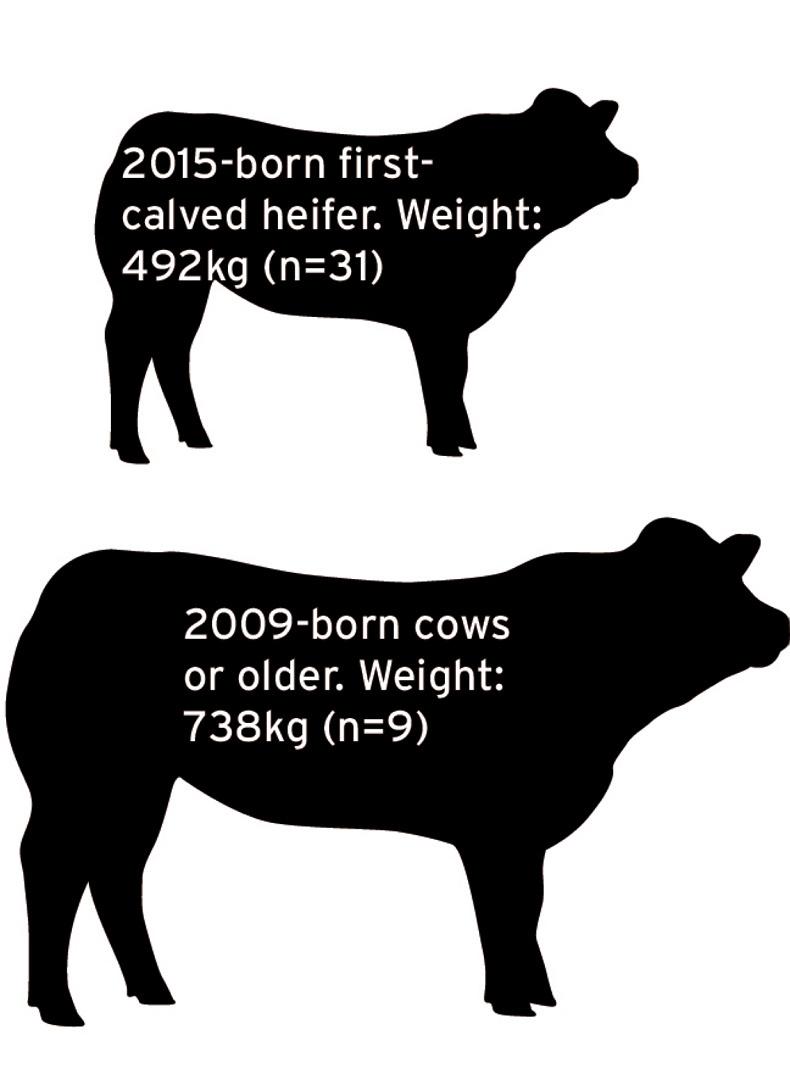With breeding finished three weeks ago, we are waiting until the end of August to scan all cows. The focus of attention now turns to building grass covers over the next few weeks. A small drainage job will commence next week which will involve putting in 12 drainage shores in a wet area of one of the fields that is to be reseeded in the next two weeks.
Muriate of potash has also been ordered to spread in September to try and lift the potassium index on the farm. Eighty-eight per cent of the land is currently at index one and two and while some 18:6:12 has been spread during the current grazing season, it will just replace offtakes and the extra potassium will be needed to build the indexes. Phosphorus is also an issue and slurry has been spread on the fields lowest in P on the most recent soil samples. The pH of the farm is good at 6.9 for the whole farm.

Breeding
Stock bulls were removed from the herd on 18 July 10 days later than planned due to one of the Limousin bulls going infertile. In total, there were 109 cows available at the beginning of the breeding season and 15 heifers (124 animals).
Since then, we took the decision to cull three cows for feet issues, two for docility issues and one with a poor udder (six in total), so that left 118 available to breed.
Two of the 15 heifers and six of the mature cows have been seen in heat over the past three weeks since the bulls were removed so we are currently looking at having 14 culls at the moment.
This is best-case scenario and we are expecting a few more to scan empty at scanning. If we have 19 cull cows this year that means replacement rate will be 15% but it will mean we will need to source 10-15 in-calf heifers next spring to hit our target of 120 breeding cows for the herd.
The farm will also have to source 15 breeding heifers next spring to have sufficient replacements in 2019. The infertile bull was insured and will be slaughtered in the coming weeks.
Grass
Grass growth remains good, with 53kg being grown on the farm over the past seven days. Current demand is running at 49kg. There are currently 16 days of grass ahead on the farm and average farm cover is currently running at 775kg/DM/ha.
The focus is now turning to building days ahead in August. The plan is to build about 1.5 days a week to end up with about 22 days ahead at the end of August, 28 days ahead at the end of September and 35 days ahead at the end of October. The plan is to have 66% of the farm closed by 5 November and 100% closed by 1 December. Some 6.6t of dry matter/ha has been grown up to 7 August,(4.7 of grazed grass/ha and 1.7t of silage/ha).
The best paddock on the farm has grown 12.9t/ha and has been grazed six times, while the worst paddock has grown 4.1t and has been grazed three times. So far this year we have spread 15t of CAN, 6t of urea and 4t of 18:6:12.
Reseeding
Seventy-two per cent of the farm has been reseeded so far. This includes 8.71ha reseeded in June 2016 and 12.58ha reseeded in September 2016. Some 14.44ha have been reseeded in April/May this year and a further 21.83ha are due to be reseeded this month.
Varieties have been kept simple using different mixes and single stands of Abergain, Aberchoice, Kintyre, Drumbo, Aston Energy and Aspect. Abererald, Buddy and Crusader clover have also been used.
Most of the fields have been ploughed and tilled, with 3.56ha sown using a min-till Dalbo machine. While this looked disappointing for two months after sowing due to dry weather, it has grazed out well and farm manager Ger O’Dwyer is happy with the sward. Reseeding is costing €269/acre and all swards have been sprayed with Legumex DB and Triad. Ten acres of kale sown on 10 June is doing well and silage bales have been positioned for feeding during in-situ grazing in winter months.
Weight gains
All stock including cows were weighed on Friday 21 July. The average date of birth of all the suckler X calves on the farm was 9 March and average weight for the male calves was 216kg and they have gained 1.29kg/day since birth. Heifer calves weighed 200kg and have gained 1.2kg/day since birth.
Calves have been faecal-sampled three times so far and have returned clear. However, some coughing was noticed at weighing two weeks ago and calves were dosed with a white oral drench.
Dairy X Angus and Hereford heifer calves have an average date of birth of 3 March and they weighed 133kg, gaining 0.68kg/day since birth. They gained 1.01kg/day over the past 30 days. They are a little behind target and need to gain 1kg/day from now until 1 November to hit the target of 230kg. They are still being fed 0.8kg/day of a 17% protein ration and grazing reseeded swards. Average cow weight for the herd on 20 July was 597kg, with 31 first-calved heifers weighing 492kg and nine 2009 cows or older weighing 738kg.
Call in to the Irish Farmers Journal stand next Sunday 13 August at Tullamore Livestock Show to hear more about the farm and current performance from our livestock team. Cows and calves, dairy calves and sheep from the farm will be on display and discussions and live demos will take place during the day.






 This is a subscriber-only article
This is a subscriber-only article











SHARING OPTIONS: